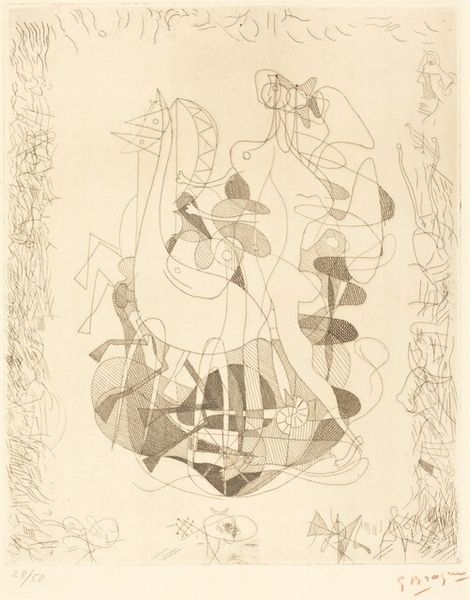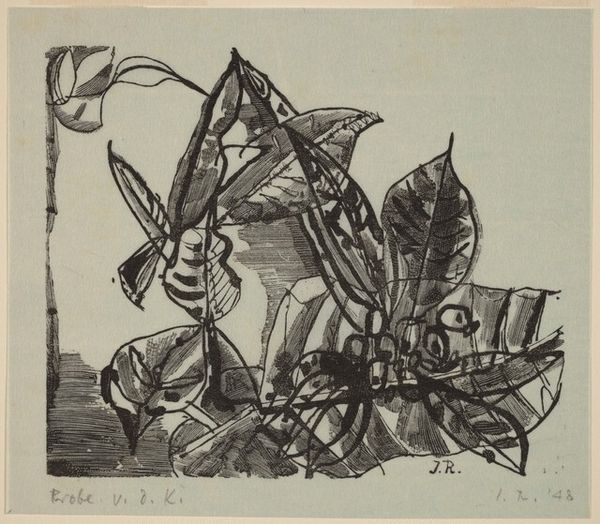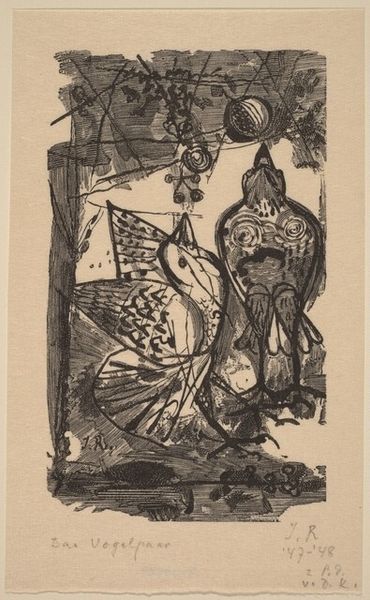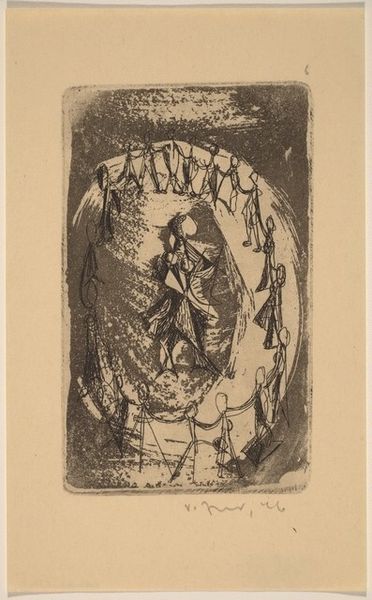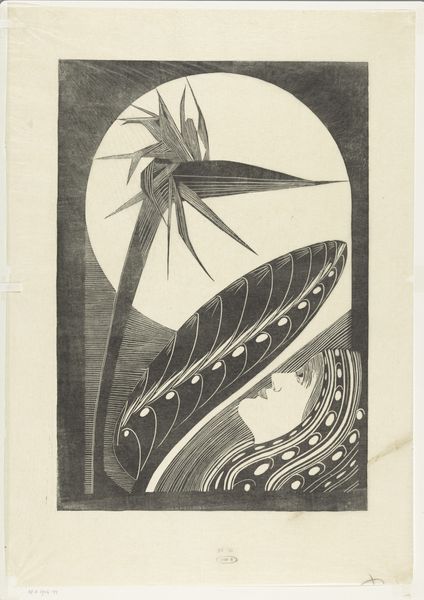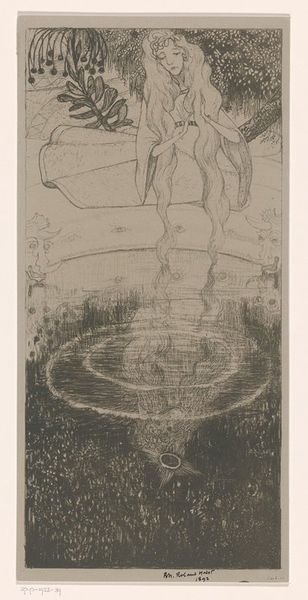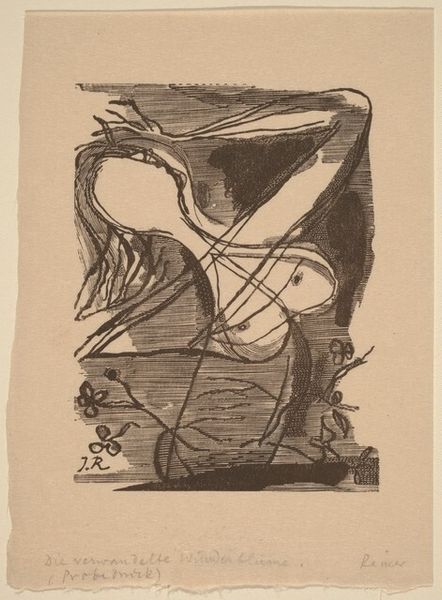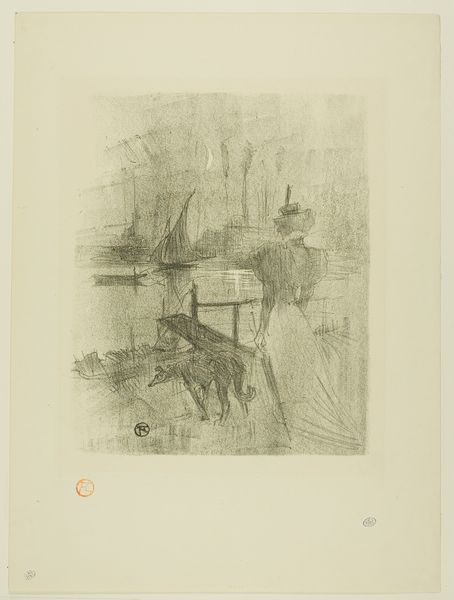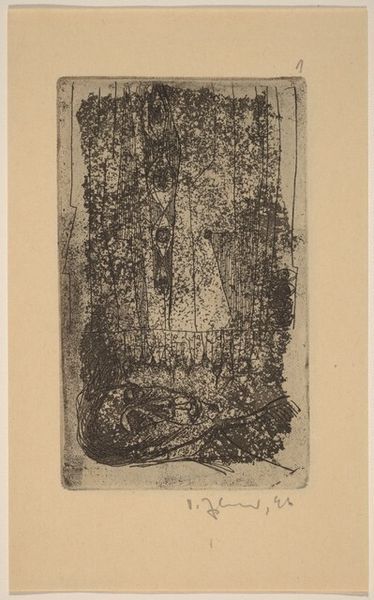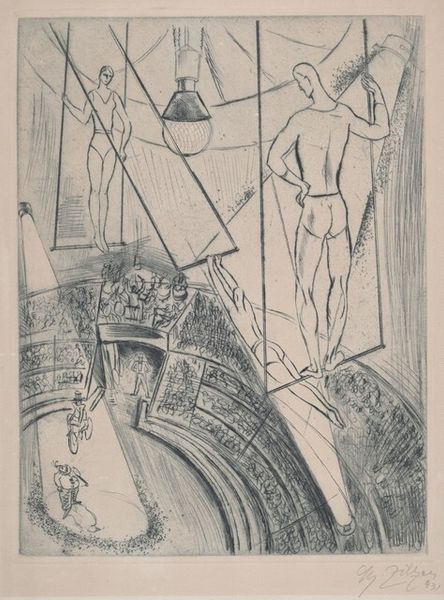
drawing, print, etching, ink
#
drawing
#
ink drawing
# print
#
etching
#
ink
#
linocut print
#
geometric
#
abstraction
Dimensions: plate: 11.8 x 7.1 cm (4 5/8 x 2 13/16 in.) sheet: 16.8 x 10.2 cm (6 5/8 x 4 in.)
Copyright: National Gallery of Art: CC0 1.0
Curator: This is Václav Zykmund's "Stará Paříž," created in 1946, an etching in ink on paper. What do you make of it? Editor: Well, it has an energy to it. Chaotic, almost frantic. The linework is dense, and the composition, with all those colliding geometric shapes, feels incredibly tense. Curator: I'd agree. The sharp angles are a significant aspect. The etching and ink create textures that add to the feeling. Semiotically, you could interpret the overlapping lines as a kind of visual anxiety, speaking to a fractured reality, particularly after World War II. Editor: Absolutely. "Stará Paříž"—Old Paris. Considering it was made just after the war, I see a dialogue with the recent past: Paris was bruised. I can imagine the people there struggling to reconstruct the City of Lights after German occupation, coping with trauma while attempting to rebuild their lives. Was Zykmund commenting on the resilience of the Parisian people? Curator: It's certainly plausible. He might be. The choice of abstraction distances us from direct representation. And abstraction, you will note, flourished after the war. What seems to be a vase with botanical arrangements seems to emerge from the background. It is, ultimately, representational subject matter rendered almost beyond recognition by the harsh lines. It forces the viewer to reckon with dissonance, perhaps symbolic of society itself. Editor: You have mentioned “Society.” This was created in Czechoslovakia not long before the Communist coup of 1948. If it speaks to societal anxiety, that anxiety was likely not just rooted in a response to the Second World War, but to an impending Communist takeover that occurred just two years after the work was produced. Curator: Interesting point. By deconstructing the visible, perhaps Zykmund was hinting at the dismantling of pre-war social structures and beliefs. Editor: It is a somber yet captivating image. Knowing this print exists, one feels impelled to ask—what if "Stará Paříž" wasn’t just about remembering an era gone by, but anticipating the dawn of something new, both frightening and unknown? Curator: A sobering perspective to consider indeed, viewing it as both elegy and prophecy. Thanks.
Comments
No comments
Be the first to comment and join the conversation on the ultimate creative platform.
